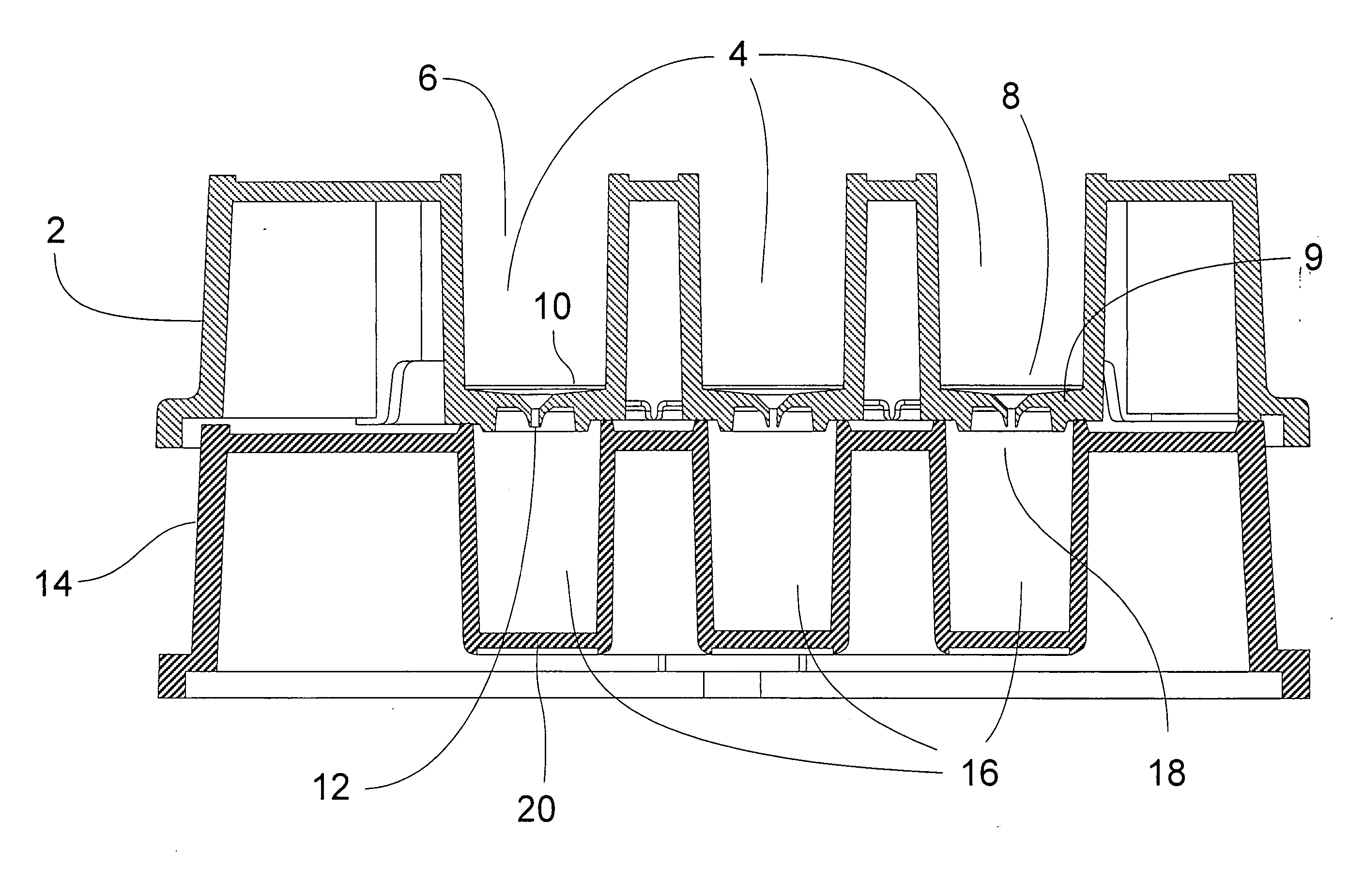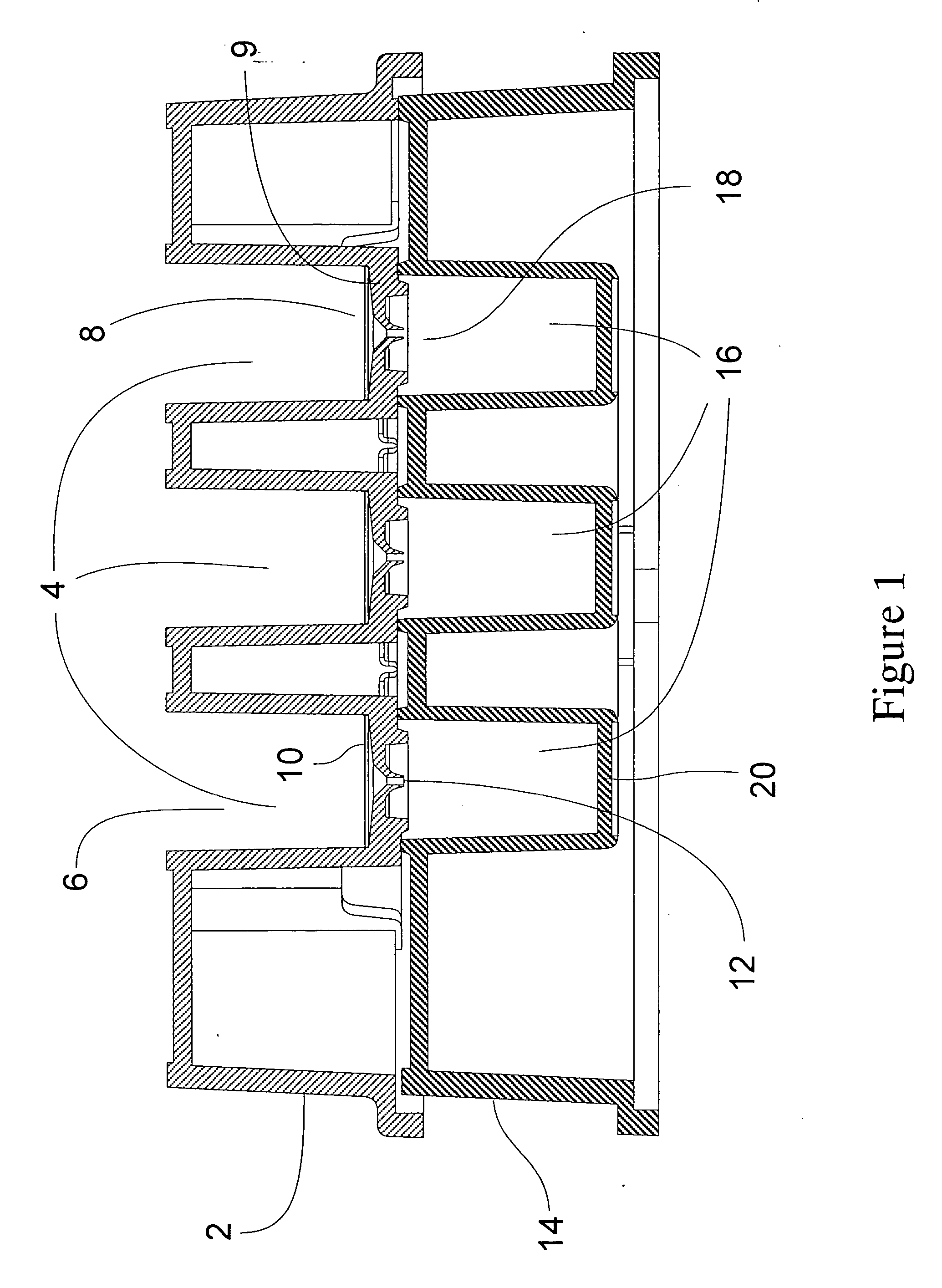Ultrafiltration device for drug binding studies
a technology of ultrafiltration and drug binding, which is applied in the field of ultrafiltration devices for drug binding studies, can solve the problems of inability to heat seal in place, measurable levels of non-specific binding (nsb), and inability to use ultrafiltration membranes in multiple well plates, etc., and achieves the effects of reducing non-specific binding (nsb), simple and flexible structure, and improving protein retention
- Summary
- Abstract
- Description
- Claims
- Application Information
AI Technical Summary
Benefits of technology
Problems solved by technology
Method used
Image
Examples
examples
Testing Membrane Non-Specific Binding
Microcon® Device Preparation:
[0034] The membrane to be tested was cut with the appropriate die cutter for the diameter of the device. The assembly consisted of placing the membrane on the support followed by addition of a gasket.
[0035] The collar is then placed on top of the assembly and sealed at a pressure varying from 65 to 100 psi.
Testing Proper Assembly and Integrity of the Device:
[0036] a) The devices were visually inspected by making sure the gasket was not deformed.
[0037] b) The devices were disassembled and checked for uniform gasket imprint on the membrane.
[0038] If not uniform, the assembly pressure was increased until upon inspection a proper imprint was observed
[0039] c) Testing of a proper seal of the device was made by adding 500 □l of “red dye” and spinning the device in a centrifuge at 14000×g for 3 minutes. Any unfiltered dye was removed from the device. The collar and gasket were removed and one looked for the absence...
PUM
| Property | Measurement | Unit |
|---|---|---|
| pore size | aaaaa | aaaaa |
| pressure | aaaaa | aaaaa |
| concentration | aaaaa | aaaaa |
Abstract
Description
Claims
Application Information
 Login to View More
Login to View More - R&D
- Intellectual Property
- Life Sciences
- Materials
- Tech Scout
- Unparalleled Data Quality
- Higher Quality Content
- 60% Fewer Hallucinations
Browse by: Latest US Patents, China's latest patents, Technical Efficacy Thesaurus, Application Domain, Technology Topic, Popular Technical Reports.
© 2025 PatSnap. All rights reserved.Legal|Privacy policy|Modern Slavery Act Transparency Statement|Sitemap|About US| Contact US: help@patsnap.com



